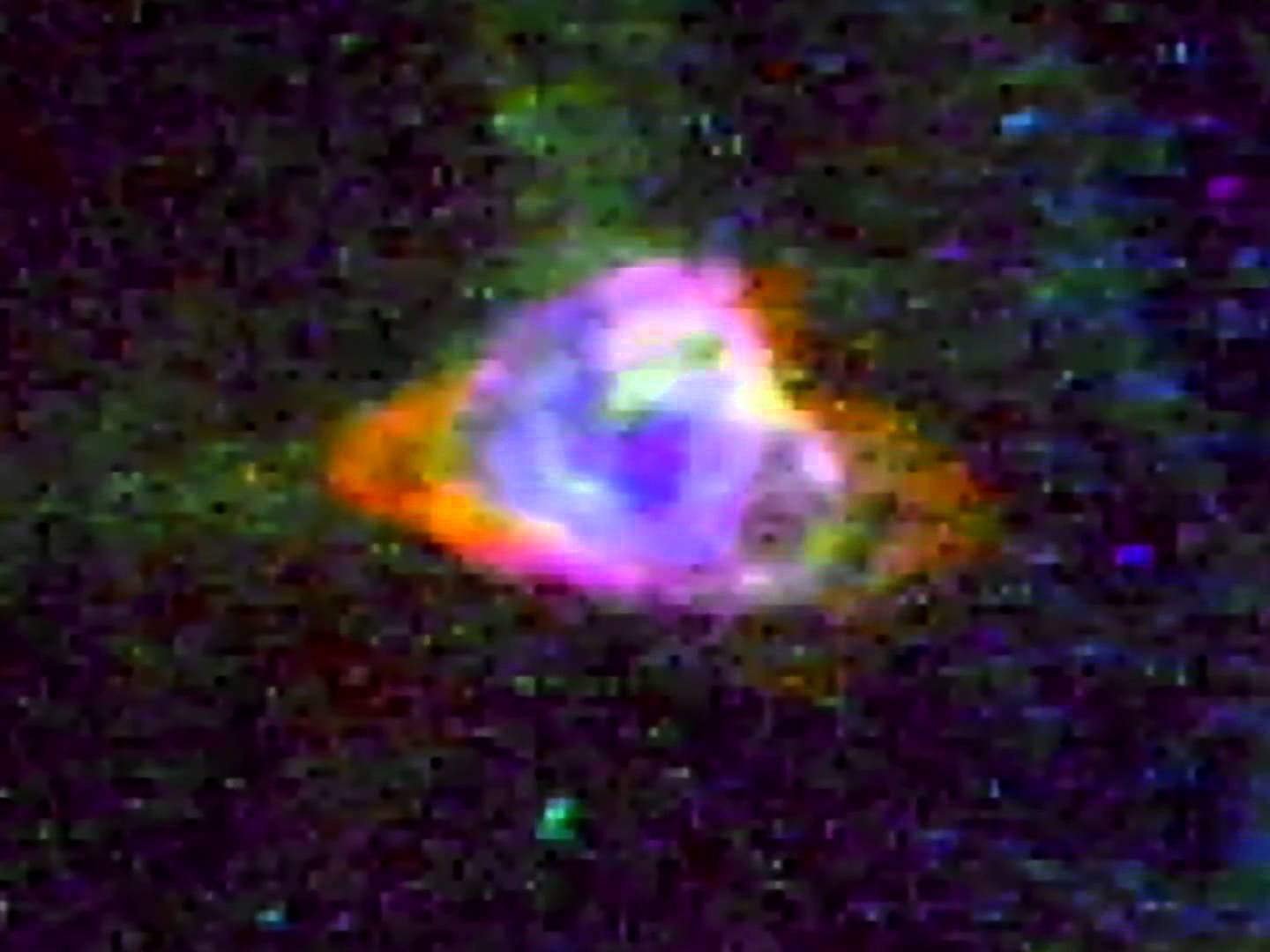more at
“Describes the recent discovery of the supernova SN 1987A on February 23, 1987. NASA scientists explain how natural nucleosynthesis (formation of heavy elements) occurs when a supernova is formed and how studying the death of stars will help explain the origin of the universe.”
Public domain film from NASA, slightly cropped to remove uneven edges, with the aspect ratio corrected, and one-pass color correction & mild video noise reduction applied.
The soundtrack was also processed with volume normalization, noise reduction, clipping reduction, and/or equalization (the resulting sound, though not perfect, is far less noisy than the original).
SN 1987A was a supernova in the outskirts of the Tarantula Nebula in the Large Magellanic Cloud (a nearby dwarf galaxy). It occurred approximately 51.4 kiloparsecs from Earth, approximately 168,000 light-years, close enough that it was visible to the naked eye. It could be seen from the Southern Hemisphere. It was the closest observed supernova since SN 1604, which occurred in the Milky Way itself. The light from the new supernova reached Earth on February 23, 1987. As it was the first supernova discovered in 1987, it was labeled “1987A”. Its brightness peaked in May with an apparent magnitude of about 3 and slowly declined in the following months. It was the first opportunity for modern astronomers to see a supernova up close and observations have provided much insight into core-collapse supernovae…
A supernova is a stellar explosion that briefly outshines an entire galaxy, radiating as much energy as the Sun or any ordinary star is expected to emit over its entire life span, before fading from view over several weeks or months. The extremely luminous burst of radiation expels much or all of a star’s material at a velocity of up to 30,000 km/s (10% of the speed of light), driving a shock wave into the surrounding interstellar medium. This shock wave sweeps up an expanding shell of gas and dust called a supernova remnant. Supernovae are potentially strong galactic sources of gravitational waves. A great proportion of primary cosmic rays comes from supernovae.
Supernovae are more energetic than novae. Nova means “new” in Latin, referring to what appears to be a very bright new star shining in the celestial sphere; the prefix “super-” distinguishes supernovae from ordinary novae, which are far less luminous. The word supernova was coined by Walter Baade and Fritz Zwicky in 1931. It is pronounced /ˌsuːpərnoʊvə/ with the plural supernovae /ˌsuːpərnoʊviː/ or supernovas (abbreviated SN, plural SNe after “supernovae”).
Supernovae can be triggered in one of two ways: by the sudden re-ignition of nuclear fusion in a degenerate star; or by the gravitational collapse of the core of a massive star. In the first case, a degenerate white dwarf may accumulate sufficient material from a companion, either through accretion or via a merger, to raise its core temperature, ignite carbon fusion, and trigger runaway nuclear fusion, completely disrupting the star. In the second case, the core of a massive star may undergo sudden gravitational collapse, releasing gravitational potential energy that can create a supernova explosion.
The last directly observed supernova in the Milky Way was Kepler’s Star of 1604 (SN 1604); remnants of two more recent supernovae have been found retrospectively. Observations in other galaxies indicate that supernovae should occur on average about three times every century in the Milky Way, and that any galactic supernova would almost certainly be observable in modern astronomical equipment. They play a significant role in enriching the interstellar medium with higher mass elements. Furthermore, the expanding shock waves from supernova explosions can trigger the formation of new stars…

